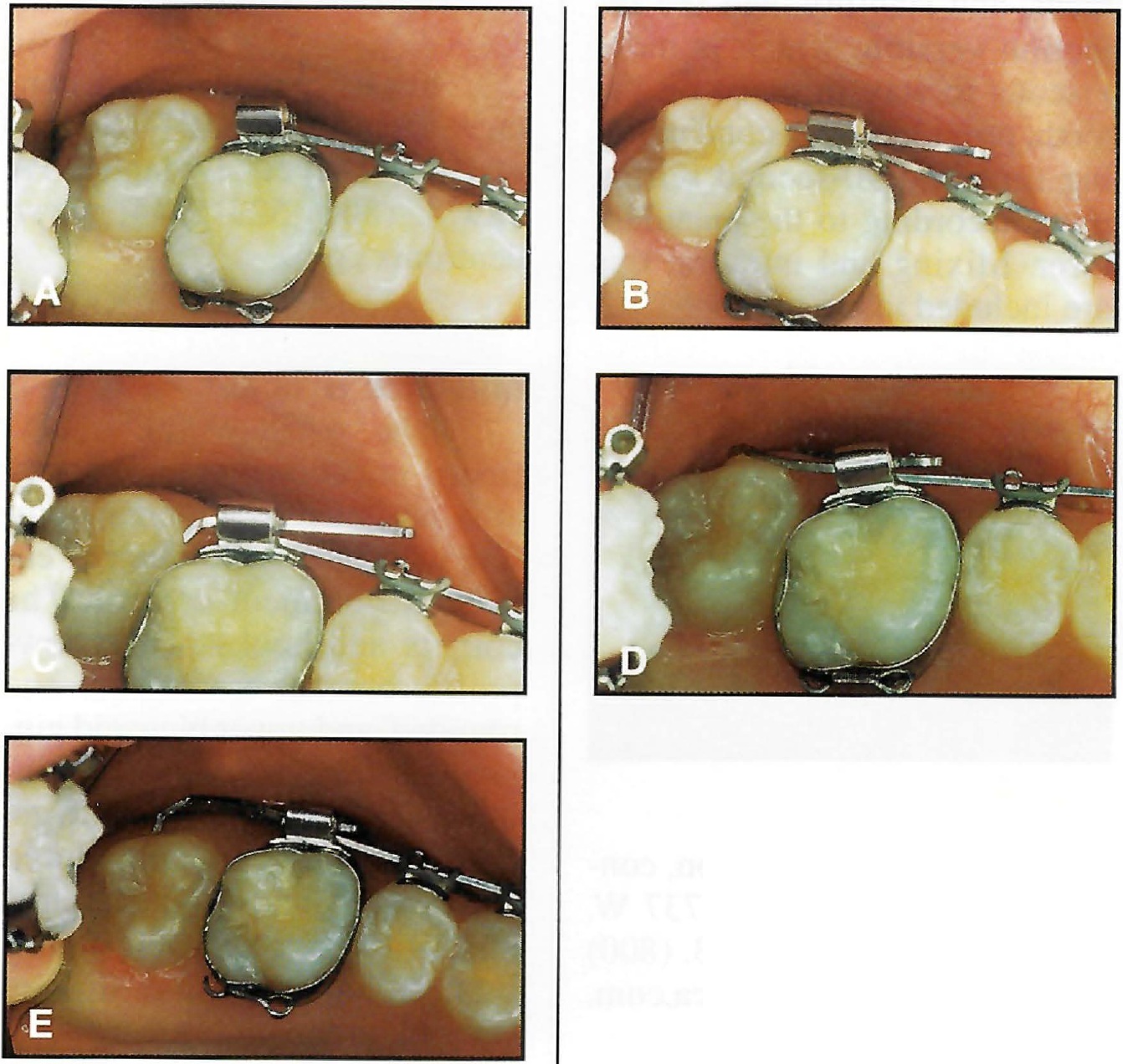PEARLS
A Simple Method of Aligning Maxillary Second Molars Toward the End of Treatment
Maxillary second molars frequently have not erupted at the time of initial appliance placement. When these teeth do eventually erupt, it is not uncommon for them to be buccally displaced relative to the adjacent first molars. A similar situation, where the maxillary first molars roll in palatally, is often encountered as a side effect of a maxillary reverse-curve intrusion/ retraction arch.
If this relationship appears toward the end of treatment (Fig. A), attempting to incorporate the second molars in a new archwire may disturb the buccal occlusion, especially where offsets have been placed and vertical elastics used to facilitate proper buccal interdigitation.
A simple yet effective alternative is illustrated here. A segment of .018" X .025" stainless steel wire, about 2/3" long, is inserted through the first molar auxiliary archwire slot (Fig. B), and the protruding distal end is bent down 45° (Fig. C). The wire segment is then pushed through and activated in close proximity to the buccal surface of the second molar (Fig. D).
The main archwire is left in place. Correction of the second molar position usually takes only four to six weeks, at which time the patient is ready for debonding (Fig. E).
Similar articles from the archive:
- PEARLS Predictable Finishing Wires March 1996
- The Centric Relation Tooth Positioner: Its Use as a Finishing Appliance for Modern Orthodontics January 1978
- The Tooth Aligner December 1971



